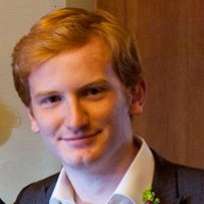It’s easiest to describe Christian Tetzlaff’s approach to playing the violin by what he isn’t trying to do. He is not trying to play as beautifully as possible, in the conventional sense. He is not trying to sound like a nightingale, soaring long, honeyed lines above an accompaniment. He is not, in other words, trying to make his violin sound as the mind’s ear instinctively thinks it should. That is too easy, after all, and it inhibits a truer sense of expression. It would be easy to misunderstand him, to take his joking line in a recent interview that “beauty is the enemy of expression” too literally. But we shouldn’t. Conventional beauty, if we can agree on what such a thing might be, needs to be held in reserve.
Why? Well, the conclusion of this final concert in 92Y’s “Contrasts” series amply answered that. As his melody rose slowly skyward in the final movement of the Quatuor pour la fin du temps, he finally deployed his purest tone, not sickly sweet or over-laden with vibrato, but somehow immaculate. Beauty, and of a particularly refined kind, turns out to be reserved in Tetzlaff’s case to praise the immortality of Jesus.
It was a fitting conclusion to a concert that asked more questions than it answered. “Contrasts” has built three recitals around Mozart’s chamber music, using it as a foil for Bartók, Messiaen, and German composer Jörg Widmann. For this performance Tetzlaff was joined by his cellist sister Tanja, Widmann on clarinet, and Alexander Lonquich at the piano.
It was two Mozart works that were performed most challengingly. We might usually judge performances of Mozart’s music by their ability to find the grace and dignity special to this composer: by that measure, the K502 Piano Trio that opened this concert would have left much to be desired. Lonquich in particular was unremittingly aggressive in the way he placed notes, whether with his left or right hands. But the playing of the two Tetzlaffs pointed to a deeper, intriguing conception of Mozart as proto-modernist, complete with short phrases, shards of melody, and sharply distinct dynamics. There was far more poise to be heard in the central slow movement, but still nothing recognizably Mozartean. That made for fascinating listening, although even listening with the kind of ears one might bring to Schoenberg Lonquich could not match the subtlety of the Tetzlaff paid. (He was not helped by a Steinway that was tuned remarkably poorly, and which further unraveled over the course of the concert.)
The K526 Violin Sonata received similar treatment. Tetzlaff here was almost submissive in his relationship to the piano, fracturing his tone and for the most part playing quietly, entirely beneath the radar, in the first movement at least. While there was more of an equal partnership in the long paragraphs of the Andante, again Tetzlaff rarely allowed his tone to open out and sing. The finale showed that if there is great potential in this kind of approach to Mozart, it stands a good chance of merely being perplexing if it doesn’t quite come off.
The other two works on the programme certainly did come off. Widmann has a talent for composing solo instrumental works that at once push virtuosic playing to its outer limits and show how versatile and spontaneous modern composition and playing technique can be. To top it off, he is a clarinetist of the first rank. His Fantasie is a funny, difficult, and precise work that bridges jazz, the riffs of a rock band’s bass guitar, more searching, questioningly floated melodic scraps, and the layering of overtones and multiphonic notes. As in Bach’s writing for solo violin and cellos, Widmann manages to maintain the appearance of keeping multiple separate pieces and focuses going at once, and here, with his stunning playing, one was never in doubt that he is a serious compositional talent. What’s more, he had the audience laughing to a 21st-century piece.
Messiaen’s wartime quartet finished things off. It’s a quartet “for the end of time” in two senses: its notes describe the spiritual apocalypse, and in purely musical terms time seems to stand still in its longer, slower movements. Here all four instrumentalists shone, together and alone. There was a furious vehemence to Messiaen’s cosmic announcements in the second, fourth, and sixth movements. But there were also huge breathes, dissolving time in the slow sections this work is more renowned for. Tanja Tetzlaff was humble but deeply expressive in Louange à l’Éternité de Jésus, hovering her cello line as if its sound was suspended in space. Widmann drew out the static sense of Abîme des oiseaux, making it a neat counterpart to his own, dynamic Fantasie. But it was Tetzlaff who really transported this music, transfigured it, drifting his sound away until it was nothing but string, no tone, no beauty, and finally, just air.


